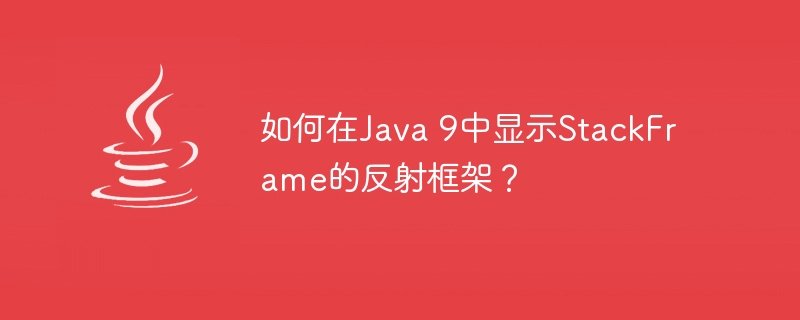
在Java 9中提供了一個標準的API,使用java.lang.StackWalker 類別。這個類別被設計成高效的,透過允許延遲存取堆疊幀。另外,還有幾個選項可以在堆疊追蹤中包含實作和/或反射幀,這對於偵錯目的非常有用。例如,我們在建立StackWalker實例時加入SHOW_REFLECT_FRAMES 選項,以便列印反射方法的訊框。
在下面的範例中,我們可以顯示StackFrame的反射幀
import java.lang.StackWalker.Option;
import java.lang.StackWalker.StackFrame;
import java.lang.reflect.InvocationTargetException;
import java.lang.reflect.Method;
import java.util.List;
import java.util.stream.Collectors;
public class ReflectionFrameTest {
public static void main(String args[]) throws NoSuchMethodException, SecurityException, IllegalAccessException, IllegalArgumentException, InvocationTargetException {
<strong>Method </strong>test1Method = Test1.class.<strong>getDeclaredMethod</strong>("test1", (Class<!--?-->[]) null);
test1Method.<strong>invoke</strong>(null, (Object[]) null);
}
}
class Test1 {
protected static void test1() {
Test2.test2();
}
}
class Test2 {
protected static void test2() {
<strong>// show reflection methods</strong>
<strong>List<StackFrame></strong> stack = <strong>StackWalker.getInstance</strong>(Option.<strong>SHOW_REFLECT_FRAMES</strong>).walk((s) -> s.collect(Collectors.toList()));
for(<strong>StackFrame </strong>frame : stack) {
System.out.println(frame.<strong>getClassName()</strong> + " " + frame.<strong>getLineNumber()</strong> + " " + frame.<strong>getMethodName()</strong>);
}
}
}<strong>Test2 22 test2 Test1 16 test1 jdk.internal.reflect.NativeMethodAccessorImpl -2 invoke0 jdk.internal.reflect.NativeMethodAccessorImpl 62 invoke jdk.internal.reflect.DelegatingMethodAccessorImpl 43 invoke java.lang.reflect.Method 564 invoke ReflectionFrameTest 11 main</strong>
以上是如何在Java 9中顯示StackFrame的反射框架?的詳細內容。更多資訊請關注PHP中文網其他相關文章!




